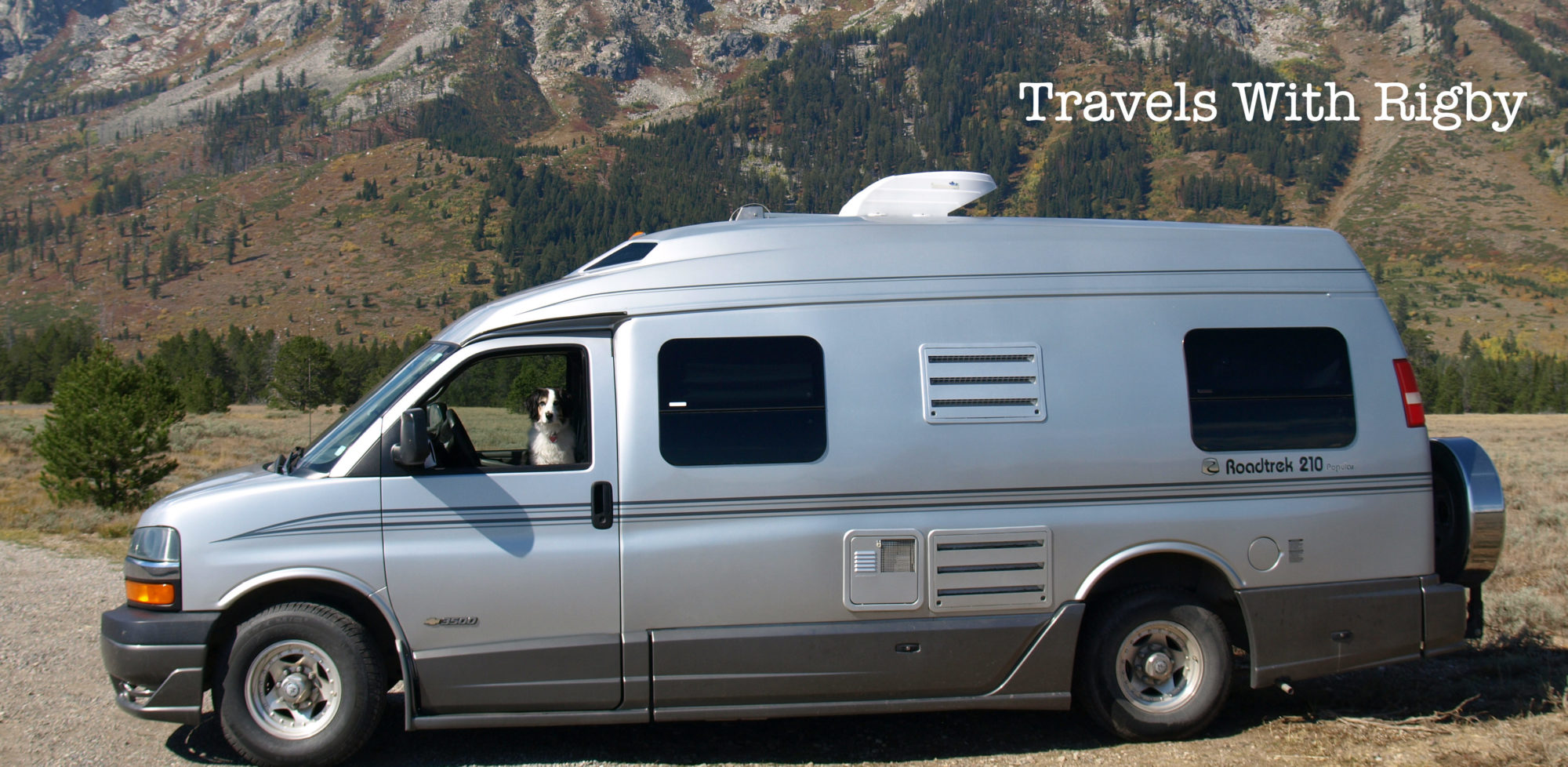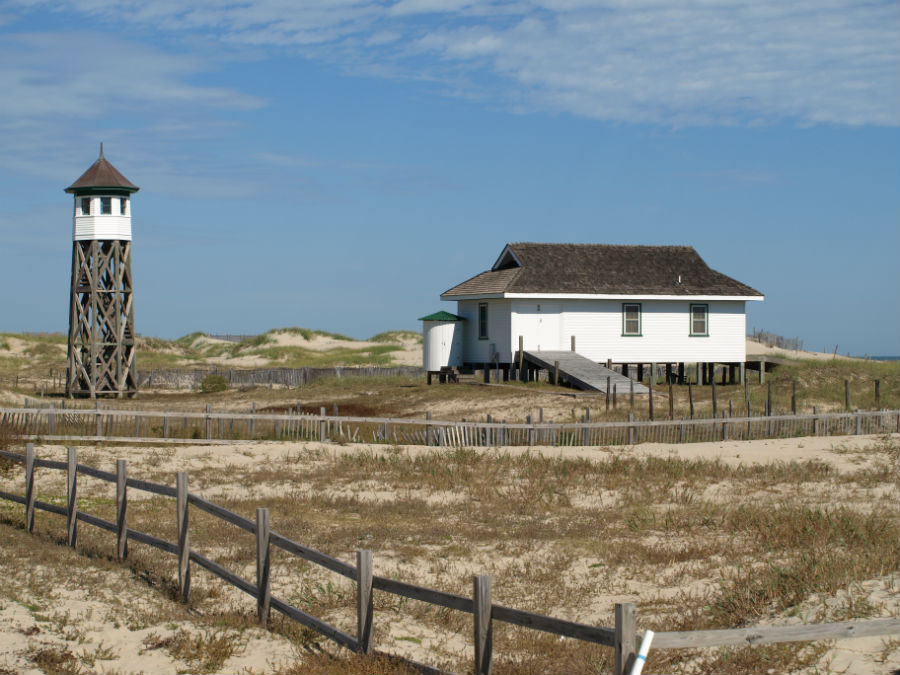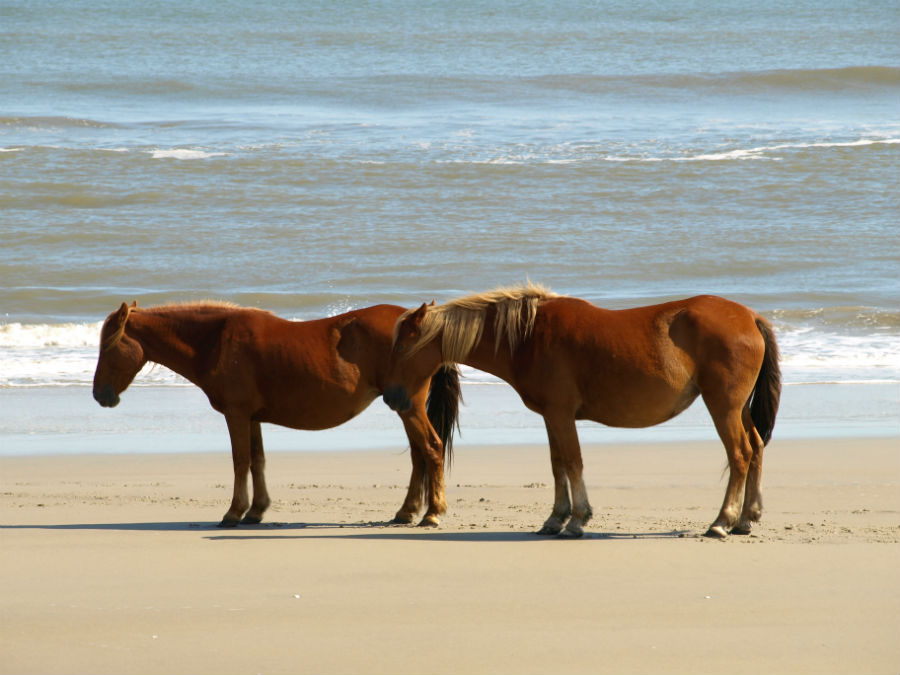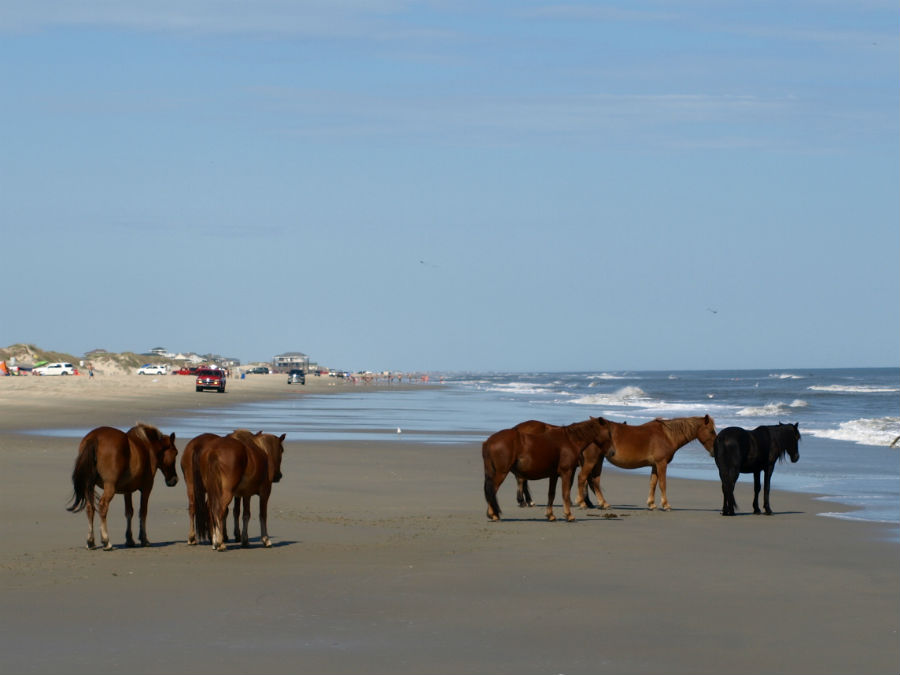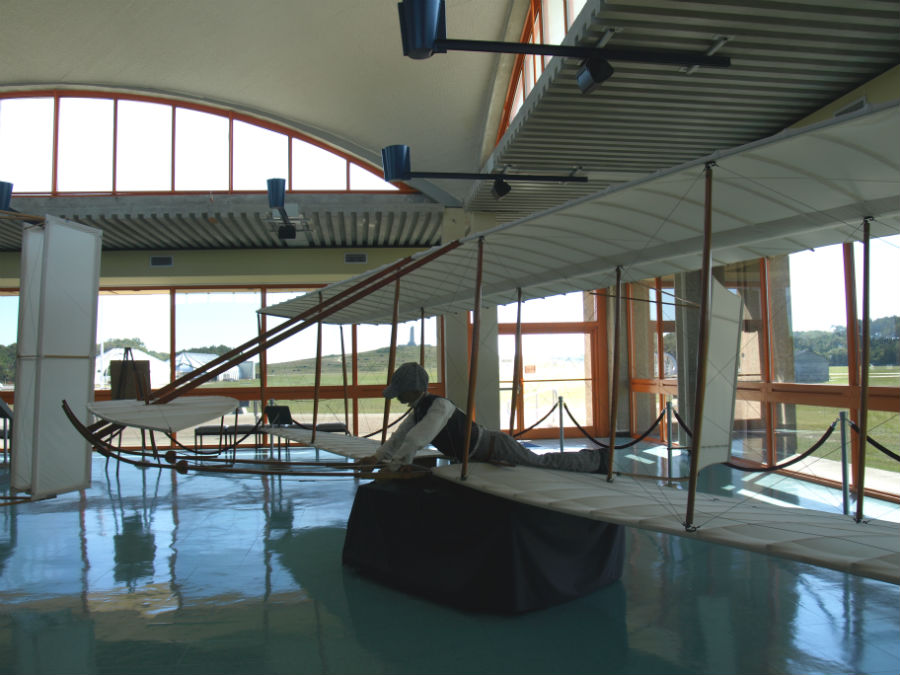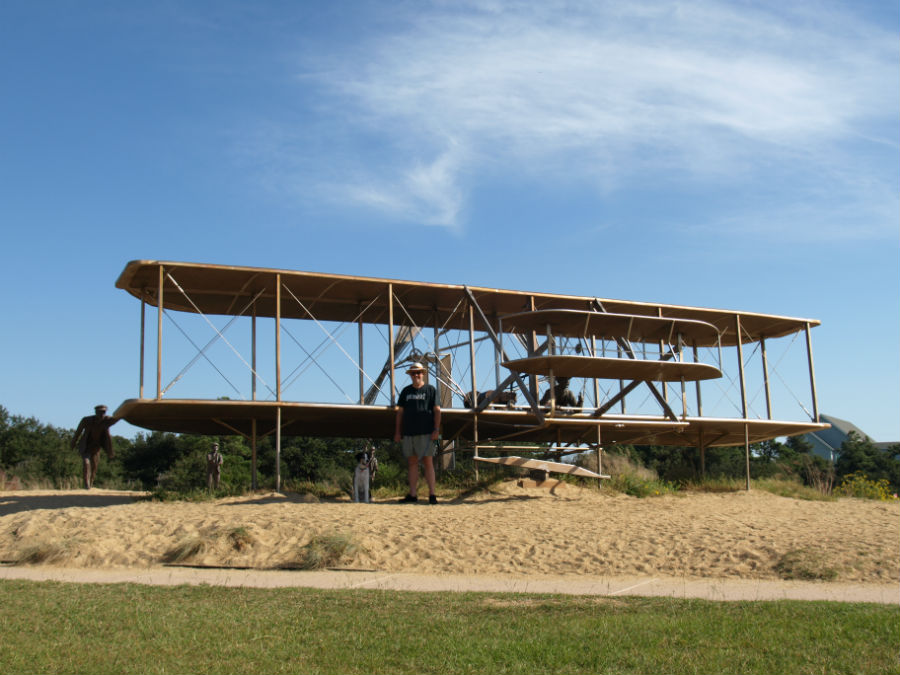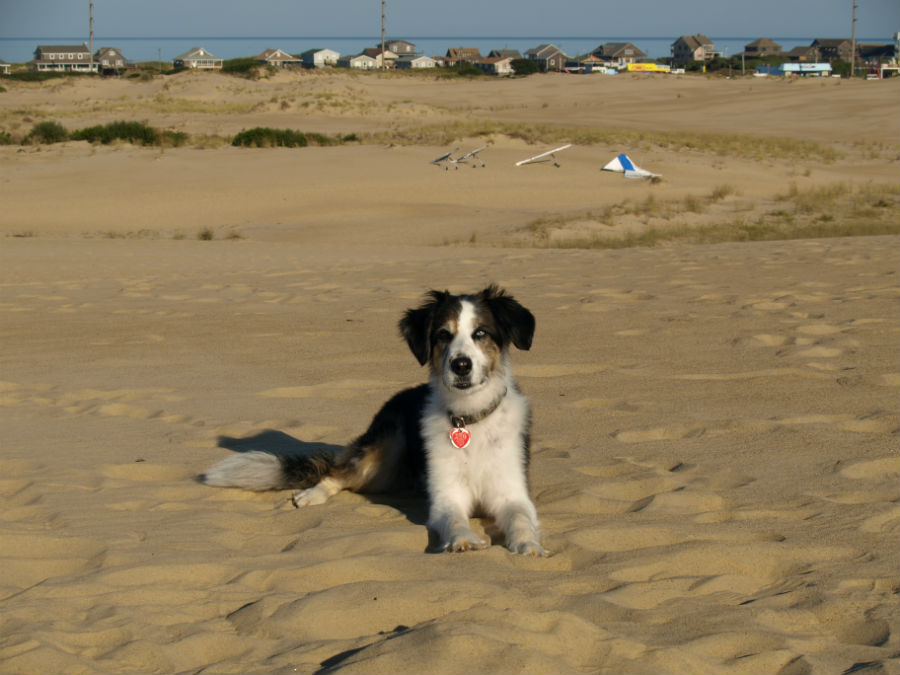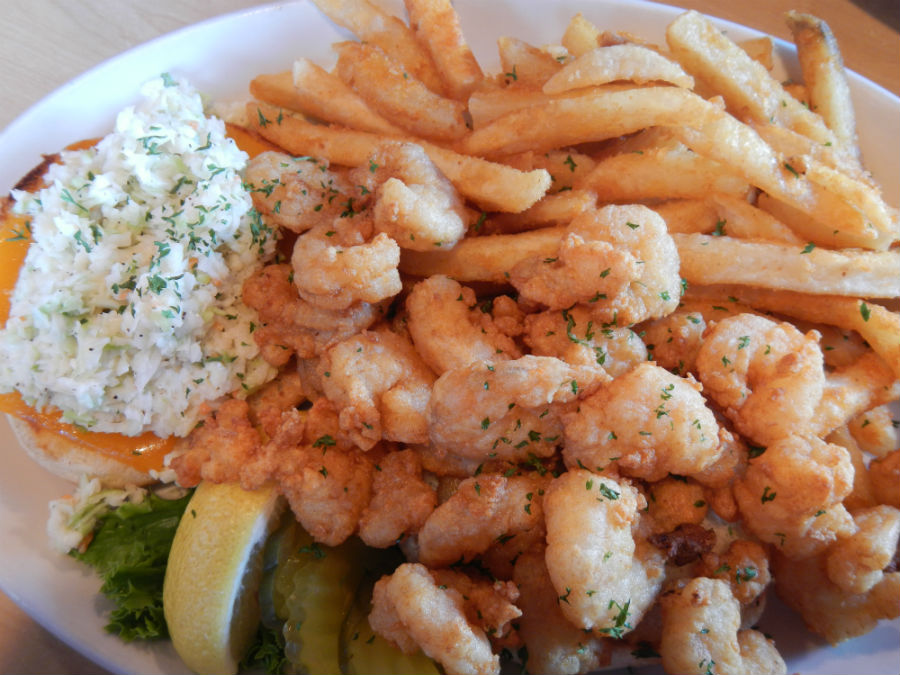We’re looking for the places that smack of coastline life. The Outer Banks certainly fill that bill – from the northern tip at the beach at Corolla, to the secluded village of Ocracoke 190 km (118 mi) away. By secluded, here’s what we overheard: “Honey, if the world ended tomorrow, Ocracoke would find out about it next week.” We’ll be there in a few days and will report in.
Look at a map of the Outer Banks and it seems like the long barrier islands could be blown away by a stiff hurricane. It turns out, they are slowly moving southwest – gale-force winds and the constant pounding of the ocean are shifting the tenuous landscape, one grain of sand at a time. Inch by inch, century by century, the sandbar moves closer to the mainland as wind and tempestuous storms re-arrange the dunes, reshaping the map. When hurricanes come roaring up the Atlantic seaboard, the Outer Banks are in the bull’s eye. But when the weather is lovely – like it has been this early October 2014 – it’s hard to imagine a more beautiful stretch of sand and sun. Kiteboarders, windsurfers, parasailors and sailors love the wind.
We started at the top: Corolla, home to the Colonial Spanish Mustangs, a herd of 100 that are direct descendants of horses shipwrecked centuries ago. Fast forward to the 21st century and these wild horses freely range the beaches, dunes and scrub brush of the narrow sandbar between the Atlantic Ocean and Currituck Sound, protected by the non-profit Corolla Wild Horse Fund.
We loaded into the back of a 4WD truck, and setout with Corolla Outback Adventures to follow hoof prints in the sand. After driving between the dunes and into the maritime forest, we finally spotted one harem of six down by the ocean’s edge catching a little sea breeze to stay cool.
OBX – in particular, Kitty Hawk – is known for wind and for the “12 seconds that changed history.” This is where two bicycle-building brothers – Wilbur and Orville Wright – came to take advantage of the constant winds and the area’s seclusion to test their homemade flying machine. The year was 1903, and on a chilly December day they ran four successful flights – the shortest was 12 seconds and the longest 59 seconds. It was the first successful power-driven flight in world history and it cemented the Outer Banks as the Birthplace of Aviation. We saw it, walked it and soaked it up at the excellent Wright Brothers National Monument. Markers in the field show the exact start and stopping points of each flight, and indoor displays include reproductions of the brothers’ first wind tunnel machine and lightweight flying contraptions.
Just a few miles down the road, Jockey’s Ridge State Park protects the tallest natural sand dune on the eastern seaboard (at 100 ft above sea level it’s not exactly nosebleed territory, but it is a very impressive sweep of sand). We took a long walk to the top of the dune for great views over the beachfront. We visited too late in the afternoon, but Wright-wannabes can sign up for hang gliding classes with the dune top as a take-off point.
Part two of our OBX mission is to try as much fresh seafood as possible. Our favourite stop was an Outer Banks’ institution: Sam & Omie’s. Even in the off season, the place was hopping, packed with entrants in a women’s sportfishing tournament who knew where to find the best seafood meals. Sam & Omie’s began as an early breakfast hangout for local fisherman back in the late 1930s. These days, they serve breakfast, lunch and dinner and are known for the shrimp burger (a delicious pile of shrimp on a coleslaw-lined bun that is impossibly messy to eat) and the catch of the day (always right off the boat). We shared a Broiled Seafood Combo of shrimp and scallops with steamed collards on the side (got to get our iron-rich veggies for the day).
